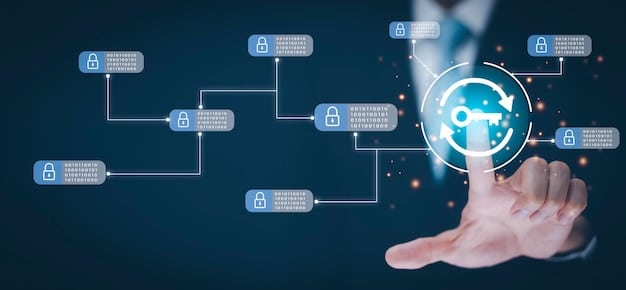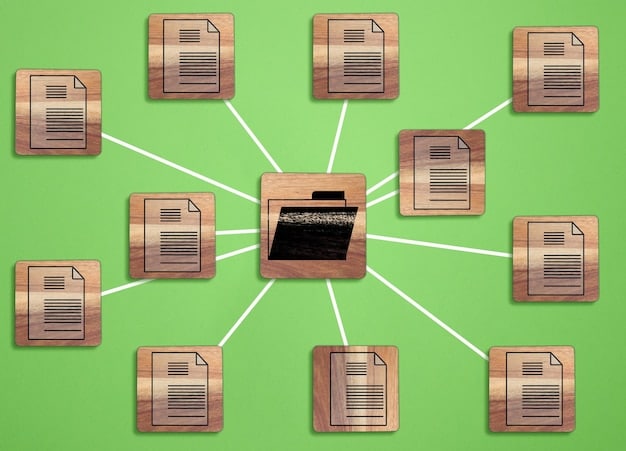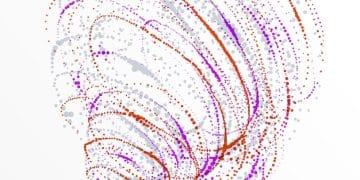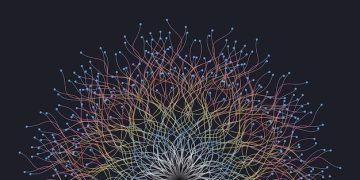Differential Privacy for US AI Research: Protecting Sensitive Data

US researchers can leverage differential privacy techniques to protect sensitive data in AI research projects by adding carefully calibrated noise to datasets, ensuring individual data points remain confidential while enabling accurate analysis and model training.
The escalating capabilities of artificial intelligence (AI) are intertwined with the crucial element of data. However, navigating the complexities of using sensitive data in AI research projects without compromising individual privacy is a challenge, especially within the stringent legal and ethical landscape of the United States. This is where **differential privacy** techniques come into play, offering a robust solution for safeguarding data while still enabling valuable research.
Understanding Differential Privacy
Differential privacy is not just about anonymization; it’s a rigorous mathematical framework. It ensures that the outcome of any analysis or query is nearly the same whether or not any single individual’s data is included in the dataset. This is achieved by adding noise to the data, but in a way that’s carefully calibrated to preserve the statistical properties necessary for accurate analysis.
The Core Principles
At its heart, differential privacy works by introducing a degree of randomness into the data. This randomness, or “noise,” masks the contribution of any single individual, thereby protecting their privacy. The challenge lies in adding enough noise to ensure privacy without rendering the data useless for research.
- Randomization: Data is altered or perturbed.
- Calibration: Noise is carefully controlled to balance privacy and accuracy.
- Privacy Budget: Limits exposure of sensitive data over multiple queries.
Why is This Important for US Researchers?
For researchers in the United States, employing differential privacy is increasingly critical to complying with regulations like HIPAA, GDPR (if dealing with EU citizens’ data), and various state-level privacy laws. Moreover, it aligns with ethical guidelines that prioritize individual rights in data-driven research.

In short, there are various techniques available for implementing differential privacy, each with unique benefits and considerations. Using these tools, researchers can effectively protect data while still achieving reliable results.
Balancing Privacy and Utility
A key challenge in implementing differential privacy is balancing the need to protect sensitive data with the goal of extracting meaningful insights from the data. Adding too much noise can render the data useless, while adding too little noise can compromise privacy. Striking the right balance requires careful consideration and experimentation.
Strategies for Optimizing the Balance
Careful calibration is essential. This may involve techniques such as adaptive noise addition, which adjusts the level of noise based on the sensitivity of the queries being made.
- Calibrated Noise Addition: Adjust noise levels dynamically.
- Privacy Budget Management: Allocate privacy budget wisely.
- Data Aggregation: Working with aggregated data.
Finding the right balance leads to achieving meaningful results without giving away individual information. It is a critical component to successful application of differential privacy in research.
Case Studies of Differential Privacy in AI Research
Examining real-world examples of how differential privacy has been successfully applied in AI research can provide valuable insights and guidance for US researchers. These case studies demonstrate the practical feasibility and potential benefits of integrating differential privacy into research projects.
Examples in Healthcare and Finance
In healthcare, differential privacy has been used to study disease patterns and improve patient outcomes without revealing individual health records. In finance, it has been applied to analyze transaction patterns and prevent fraud while protecting customer financial data.
An example of differential privacy in the US AI research is its application in the 2020 US Census. Differential privacy was implemented to protect individuals’ confidentiality while maintaining the accuracy of the census data, which is crucial for various AI research applications, including urban planning, resource allocation, and social science studies.
Case studies underscore the versatility of differential privacy in shielding personal data while also enabling significant AI research to continue. These serve as useful models for how United States researchers can apply similar concepts.
Addressing Challenges and Future Directions
While differential privacy offers a powerful solution for protecting sensitive data, it is not without its challenges. Addressing these challenges and exploring future directions will be essential for advancing the field and expanding the application of differential privacy in AI research.
Current Limitations
Differential privacy can sometimes reduce the accuracy of analysis, particularly when dealing with small datasets or complex queries. Overcoming these limitations requires innovative techniques for calibrating the noise and optimizing the use of the privacy budget. This is why continuing development on innovative techniques is crucial.
| Key Point | Brief Description |
|---|---|
| 🛡️ Differential Privacy | Adds noise to data for privacy. |
| ⚖️ Privacy Budget | Controls data exposure over queries. |
| 📊 Balancing Accuracy | Noise balance is key. |
| 🚀 Future Trends | Advancements in algorithms. |
FAQ
▼
Differential privacy adds carefully calibrated noise to datasets, ensuring individual data points remain confidential. It enables accurate analysis and model training without exposing personal information. This noise masks a single individual’s contribution to the data.
▼
US researchers should implement differential privacy for legal compliance (HIPAA, GDPR, CCPA), ethical data use, and to foster trust. Regulations emphasize privacy standards. This allows data to be used without potentially harming anyone.
▼
Common techniques include adding Laplacian noise, utilizing exponential mechanisms, and employing tools like Google’s Differential Privacy library. Determining the right method depends on the analysis being done.
▼
Balancing privacy and utility involves calibrating noise, managing the privacy budget, and optimizing query design. Finding the balance ensures meaningful insights while protecting sensitive data. Optimizing the utility of the data is important.
▼
Differential privacy can sometimes reduce analysis accuracy, particularly with small datasets or complex queries. Future research aims to improve algorithms and tools to overcome these constraints. Development continues today on better methods.
Conclusion
In conclusion, differential privacy is a powerful tool for US researchers to protect sensitive data in AI research projects. By understanding and implementing differential privacy techniques, researchers can navigate the complex legal and ethical landscape, ensuring that the pursuit of knowledge does not come at the expense of individual privacy.






